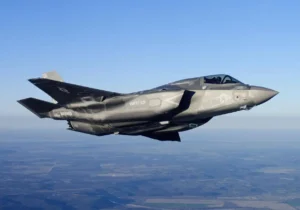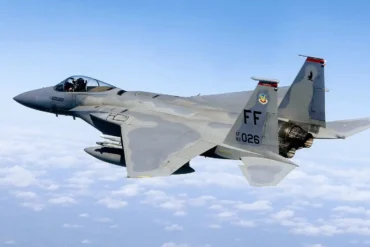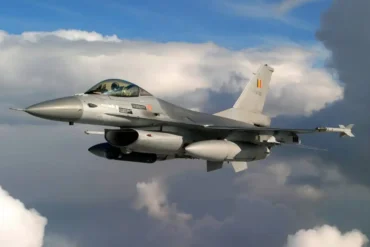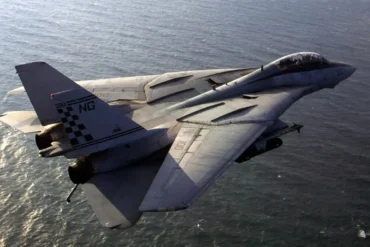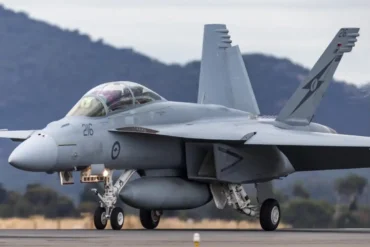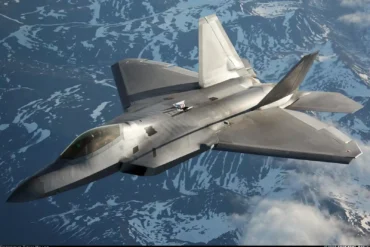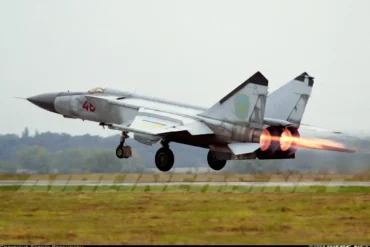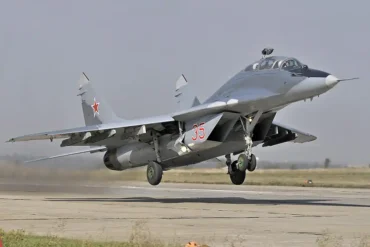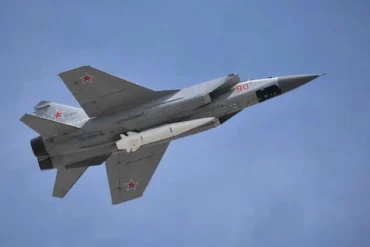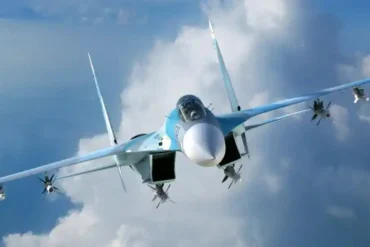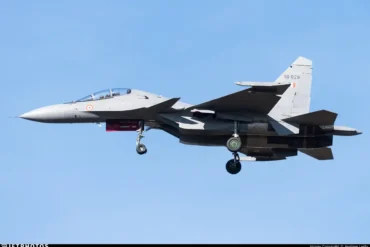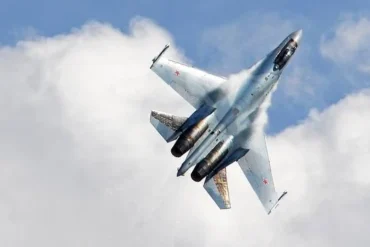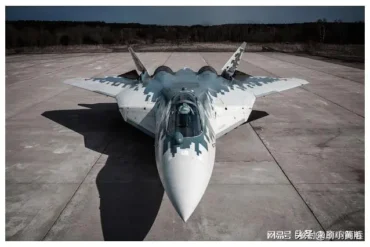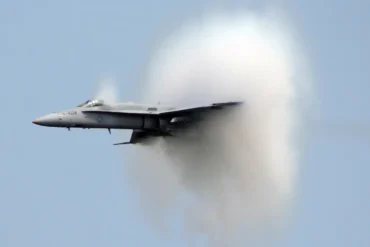The F-35 Lightning II is widely regarded as one of the most advanced and revolutionary fighter jets ever built. With its cutting-edge technology, stealth capabilities, and versatility, it has transformed military aviation in numerous ways. As we explore the F-35’s fascinating design, operational quirks, and extraordinary technical features, the following facts will offer a deeper look at what makes this fighter jet a true marvel of modern engineering.
1. The World’s First “Tri-Role” Stealth Fighter
One of the most notable aspects of the F-35 is its unique ability to serve multiple roles within the same airframe. The F-35 is designed as a multirole stealth fighter, capable of fulfilling three distinct functions:
- F-35A: Conventional takeoff and landing (CTOL) variant, primarily used by the U.S. Air Force. It is the most common model, designed for traditional airstrip operations and air-to-air combat.
- F-35B: Short takeoff and vertical landing (STOVL) variant, developed for short-range operations, and is notably used by the U.S. Marine Corps and Royal Navy. Its unique design allows it to take off and land vertically, making it ideal for use on aircraft carriers with limited runway space.
- F-35C: Carrier-based variant, designed for operations aboard aircraft carriers. It features reinforced landing gear, a larger wingspan for better lift, and foldable wings to accommodate carrier storage space.
This tri-role design allows the F-35 to be deployed across a wide variety of military branches and scenarios, from land-based operations to naval missions.
2. Stealth Design: A Double-Edged Sword
The F-35 boasts exceptional stealth capabilities, with a radar cross-section (RCS) of just 0.065 square meters. To put this into perspective, the radar signature of the F-35 is smaller than a bird—an extraordinary feat for a fighter jet. This low radar profile is achieved through advanced stealth coatings and careful airframe design, making the F-35 nearly invisible to enemy radar systems.
However, there is a trade-off with this design. To ensure that it remains visible to friendly radar systems, the F-35 must sometimes use special techniques during training. Training modes employ “Dragonfly lenses” (also known as training reflectors), which artificially increase the jet’s radar signature. This allows friendly forces to track the aircraft, ensuring that the stealth technology doesn’t inadvertently result in friendly fire incidents.
3. Augmented Reality Helmet: The F-35’s “See Through” Capabilities
One of the most innovative features of the F-35 is its augmented reality (AR) helmet-mounted display system. The F-35 eliminates the traditional heads-up display (HUD) by integrating critical flight data directly into the pilot’s helmet. This provides the pilot with a 360-degree view of their surroundings, using data from six onboard cameras.
In essence, this system allows the pilot to “see through” the fuselage of the aircraft, giving them a unique perspective of the environment below and around them, even during high-speed maneuvers. This feature significantly enhances the pilot’s situational awareness and decision-making, offering them unparalleled visibility and control in both daylight and night conditions. The night vision capability transforms nighttime combat into something akin to daylight, while also enabling missile targeting simply by moving the pilot’s head.
4. The F-35’s “Zombie” Flight: The Unbelievable Autopilot Incident
In a truly bizarre and chilling turn of events, an F-35B experienced a “zombie flight” in 2023 after its pilot ejected from the aircraft. In what was later dubbed a “ghost flight,” the F-35B continued flying autonomously for over 129 kilometers (80 miles) before crashing into a remote area. This incident led to an extensive search operation and, eventually, a public reward offer to recover the wreckage.
While the event was a rare anomaly, it highlighted the autonomous flight systems within the F-35, including its autopilot capabilities. In the rare instance of pilot incapacitation, the F-35 can engage autonomous flight modes, allowing the aircraft to continue to fly and even return to base, depending on its configuration and system status. In this particular case, the plane’s autopilot continued flying until fuel depletion led to the crash.
5. A Cybersecurity Nightmare: The F-35 Data Leak
In 2024, one of the largest military data breaches in history occurred, resulting in the theft of over 250GB of F-35 classified information. The breach, carried out by hackers, exposed critical data, including detailed schematics, technical manuals, and part specifications. The stolen data was so comprehensive that it even led to speculation about the possibility of rebuilding an F-35 in a civilian garage.
This incident underscores the importance of cybersecurity in the modern era, especially when dealing with advanced military technologies like the F-35. While the U.S. military has since bolstered its cybersecurity efforts, this event remains a reminder of the vulnerabilities inherent in digital systems.
6. Sky-High Maintenance Costs: More Expensive Than Gold
While the F-35 is an unparalleled piece of technology, its maintenance costs are notably high. Each F-35 is priced at approximately $120 million, but the ongoing maintenance required to keep these jets in operational condition significantly adds to the overall expense. The stealth coatings on the aircraft, for instance, are prone to wear and tear, requiring frequent reapplication. Moreover, every hour of flight demands 50 hours of maintenance to ensure that the aircraft remains functional and operational.
The F-35’s maintenance costs have been a point of controversy within military circles, as the aircraft’s high price tag means that maintaining a fleet of these jets can be an expensive endeavor. In some cases, weather conditions—particularly heavy rain—can ground the aircraft due to concerns over the integrity of its stealth coating. Despite these challenges, the F-35 remains a crucial asset for modern air forces.
7. The “Nose Dive” Incident: F-35B Landing Mishap
In a memorable and somewhat humorous incident in 2022, an F-35B experienced a nose-dive while being towed on the ground. The front landing gear suddenly collapsed, causing the aircraft to “kneel” in a dramatic manner. This event was captured on video and quickly went viral, becoming an unofficial symbol of the occasional quirks associated with highly advanced aircraft.
Though this event was relatively harmless, it highlighted the fragility of certain components on the F-35. The aircraft’s landing gear, designed for high-performance takeoffs and landings, proved vulnerable during ground operations. Despite the occasional malfunctions, such mishaps are common in the development of complex systems, and such incidents are typically addressed quickly in subsequent maintenance updates.
8. The “AI Nanny”: Saving Pilots’ Lives
The F-35 is equipped with the Automatic Ground Collision Avoidance System (AGCAS), an AI-driven safety feature designed to prevent deadly crashes in the event that the pilot loses consciousness. If the system detects that the pilot is incapacitated, it automatically takes over control of the aircraft, maneuvering it to avoid obstacles and ensuring a safe landing.
This remarkable technology has already saved the lives of at least eight pilots, as it provides a fail-safe when human error or incapacitation occurs. The AGCAS is a prime example of how artificial intelligence can enhance safety in high-risk environments, making the F-35 one of the most pilot-friendly aircraft ever built.
Conclusion: The F-35’s Unmatched Innovation
The F-35 Lightning II is a feat of aviation engineering that stands at the forefront of modern military technology. From its multirole versatility to its cutting-edge stealth design and revolutionary cockpit systems, the F-35 continues to push the boundaries of what is possible in military aviation. Its role in modern warfare will continue to evolve, and its technical capabilities ensure that it remains one of the most formidable and advanced aircraft in the sky.
As the F-35 continues to serve in a variety of air forces and navies around the world, its legacy of innovation, performance, and adaptability will likely influence the future of military aviation for years to come. Whether it’s its augmented reality helmets, its autonomous flight systems, or its life-saving AI features, the F-35 is more than just a fighter jet—it is a symbol of the future of combat aviation.
